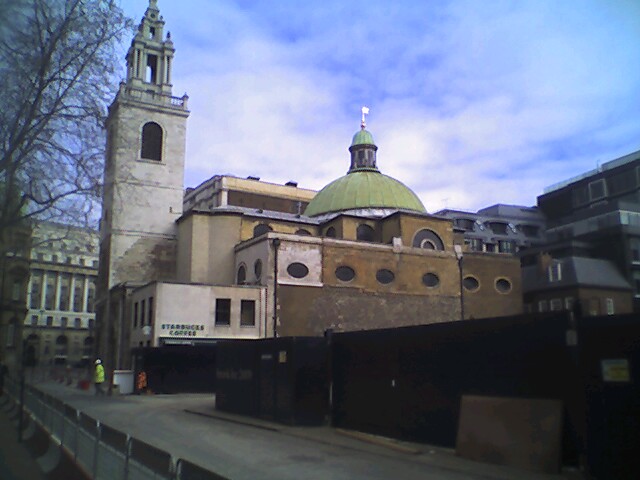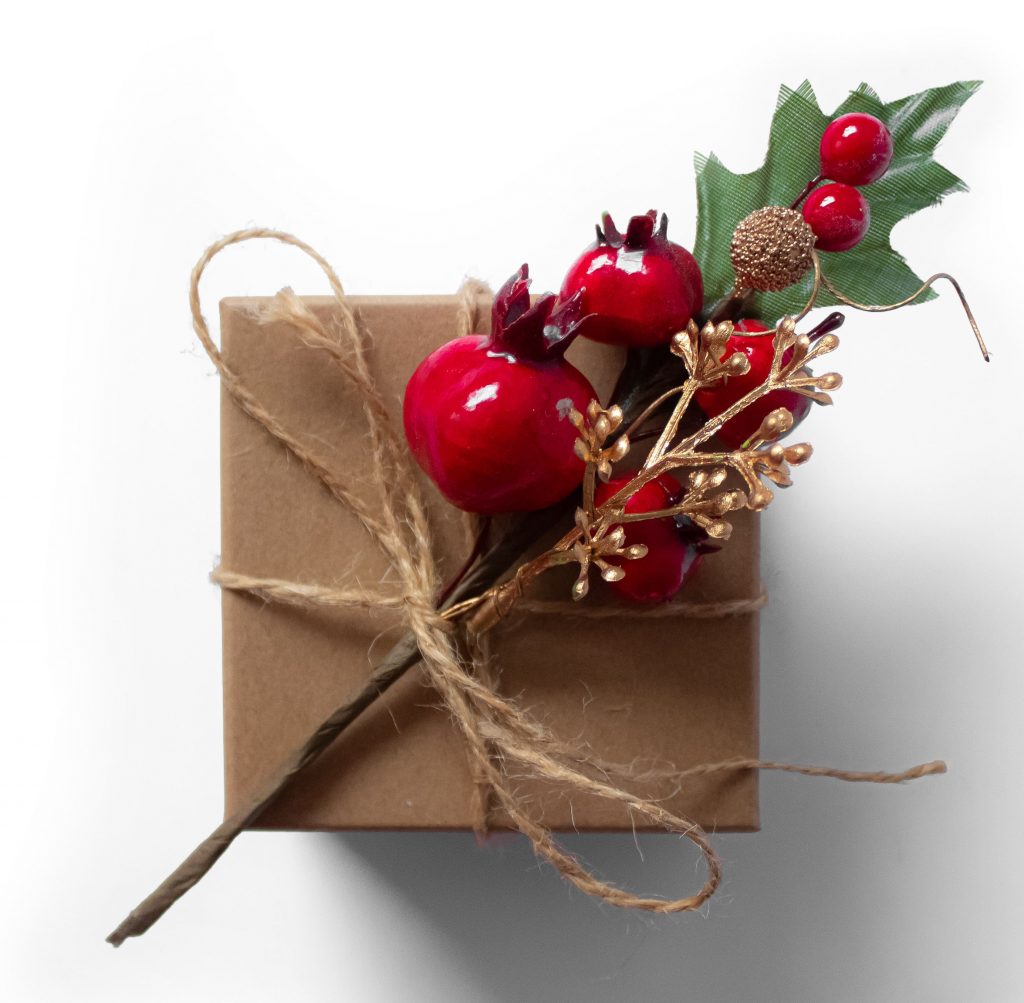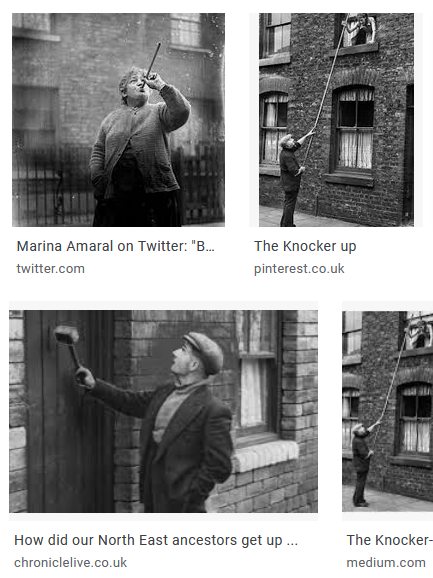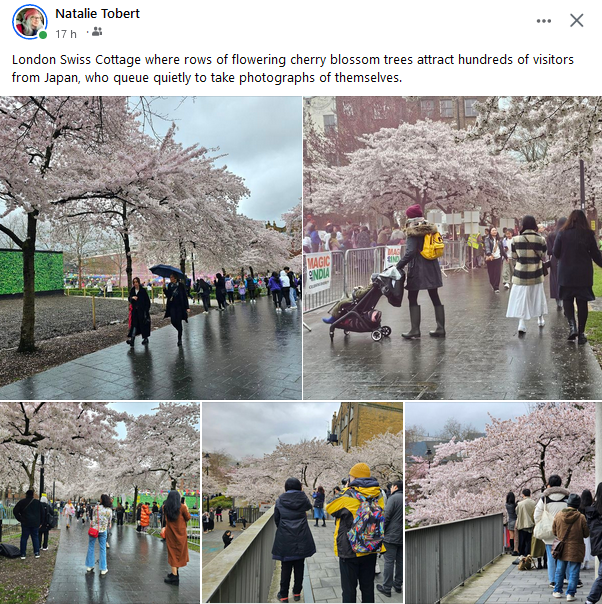
This year, I don’t think it is yet Peak Blossom. But I’m going to keep this post here to remind you of the joy of the Blossom season. You can plan to visit your local Blossom Hot spot!
Peak cherry blossom is sometime between late March and early April. Last year it was around March 19th, this year maybe a week or two away. There are many suggested places, and I enclose a couple of web links with more details. But my friend, Natalie Tobert, posted last year about Japanese people queuing up to photo cherry blossom in Swiss Cottage.
Here is an Instagram video of the blossom in Swiss Cottage, near Hampstead, London.
Sakura and Peak Cherry Blossom
For the Japanese Cherry Blossom represents both the beauty of life and its brevity. Sakura are honoured by the Samurai, and were on the badges of KamiKazi Pilots in World War 2. The Japanese began their blossom time with Plum Blossom. They can be difficult to tell apart from Cherry but it is much more fragrant. It blossoms earlier.
Cherry trees consist of 430 species in the genus Prunus. Wild Cherry and Bird Cherry are native to the UK. Normal blossom time is April. In mild winters and sheltered places like London they can blossom as soon as February. The flowers are known as Sakura in Japan, and viewing them is ‘Hanami’. Bird Cherry usually flowers in May. Recent blossoming is over 7 days earlier than the average for the previous 1,200 years.
You might like to look at the Natural History Museum discover cherry-trees website. This has more information and suggested places to see blossom.
And here the londonist.com Sakura-in-london-where&when
The Woodland Trust has a great web page about blossom in general and I include their useful table of blossom time, below.
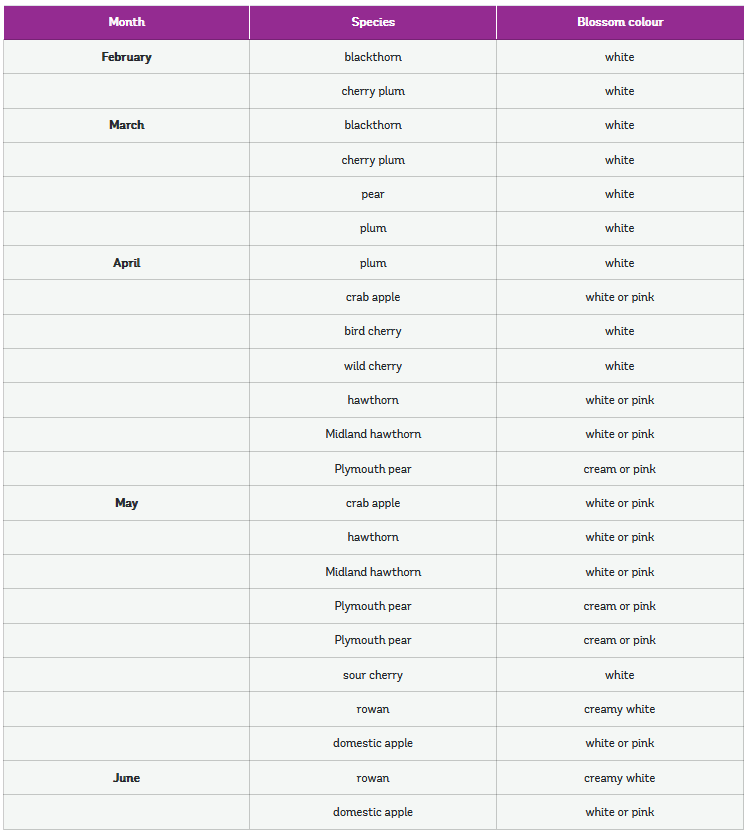
The Trust also have a ‘nature’s calendar’ program. ‘Citizen Scientists’ can participate in projects to track the progress of the sessions in nature.
https://naturescalendar.woodlandtrust.org.uk.
To read about Blossom in Haggerston Park read my post.
First published in 2024, and republished in 2025

